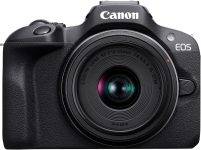
Black Friday Canon EOS R100 Mirrorless Camera Mirrorless Camera Review – Oemiu
Black Friday Canon EOS R100 Mirrorless Camera Review: A Compact Powerhouse for Beginners
The Canon EOS R100 is making waves, particularly as Black Friday approaches, promising significant deals and making it even more accessible. This compact mirrorless camera is aimed squarely at beginners, those stepping up from smartphone photography, or enthusiasts looking for a lightweight and travel-friendly option. But does it deliver? Is it truly a bargain, or are there compromises to consider? This in-depth review will explore every facet of the R100, examining its image quality, performance, features, and overall value proposition, especially in the context of the upcoming Black Friday sales. Forget the hype and let’s dive into what the EOS R100 truly offers, allowing you to make an informed decision about whether it’s the right camera for you.
Unboxing the Canon EOS R100: First Impressions and Build Quality
The initial experience with the Canon EOS R100 is one of pleasant surprise. The camera is remarkably compact and lightweight. Picking it up, you immediately appreciate its portability – a key selling point for those tired of lugging around bulky DSLRs. The body is primarily constructed from polycarbonate, which contributes to the light weight but also gives it a slightly plasticky feel. This isn’t necessarily a negative, as it feels durable enough for everyday use, but don’t expect the robust, premium feel of higher-end models. The grip is surprisingly comfortable, offering a secure hold despite the camera’s small size. This is crucial for stability, especially when shooting handheld.
The button layout is intuitive and straightforward, designed with simplicity in mind. The top dial allows for quick access to shooting modes like Auto, Scene, Creative Filters, Program, Shutter Priority, Aperture Priority, and Manual. A dedicated movie recording button is conveniently located near the shutter release. The rear of the camera features a 3-inch LCD screen, which, while not fully articulating, offers adequate viewing angles for basic framing and review. The absence of a touchscreen is a noticeable omission, however, requiring users to navigate menus using the directional pad and buttons. This can feel a bit clunky, especially for those accustomed to the intuitive touch interfaces found on smartphones and more advanced cameras. The electronic viewfinder (EVF) is a welcome addition, providing a clear and bright view, particularly useful in bright sunlight where the LCD screen can be difficult to see. It’s not the highest resolution EVF on the market, but it’s perfectly adequate for composing shots and checking exposure.
Overall, the R100’s build quality is appropriate for its price point. It’s not going to win any awards for ruggedness or premium materials, but it feels solid enough for typical use. Its compact size and lightweight design are significant advantages, making it an ideal travel companion or everyday carry camera. This simple mirrorless camera design prioritizes ease of use, making it a great entry point for new photographers.
Image Quality and Performance: Sensor and Autofocus Capabilities
The heart of the Canon EOS R100 is its 24.1-megapixel APS-C sensor, a similar sensor found in many of Canon’s entry-level DSLRs. This sensor size offers a significant upgrade in image quality compared to smartphone cameras, providing more detail, better dynamic range, and improved low-light performance. Image quality is generally excellent, especially in well-lit conditions. Colors are accurate and vibrant, and the level of detail is impressive. The R100 excels at capturing sharp, clear images with pleasing bokeh (background blur) when using lenses with wide apertures.
In low-light situations, the R100 performs admirably, thanks to its relatively large sensor and the DIGIC 8 image processor. While noise does become more apparent at higher ISO settings, the camera manages to maintain a good level of detail and color accuracy. The ISO range extends up to 25600, but it’s best to keep the ISO below 6400 for optimal results. The DIGIC 8 processor also enables features like Auto Lighting Optimizer, which helps to balance exposure and reduce the appearance of harsh shadows.
The autofocus system on the R100 is surprisingly capable for an entry-level camera. It utilizes Canon’s Dual Pixel CMOS AF technology, which provides fast and accurate autofocus in both stills and video modes. The system covers a wide area of the sensor, allowing for precise focusing even on subjects that are not in the center of the frame. Face and eye detection are also available, making it easier to capture sharp portraits. However, it is not as advanced as some of the higher-end mirrorless cameras in terms of subject tracking. Continuous autofocus performance is acceptable for slower-moving subjects, but it may struggle with fast-paced action. The burst shooting rate is also somewhat limited at 3.5 frames per second with continuous autofocus, which may not be sufficient for capturing action sequences.
| Feature | Details |
|---|---|
| Sensor | 24.1MP APS-C CMOS |
| Processor | DIGIC 8 |
| ISO Range | 100-25600 (Expandable to 51200) |
| Autofocus | Dual Pixel CMOS AF |
| Burst Shooting | Up to 3.5 fps with AF |
Video Capabilities and Creative Features
The Canon EOS R100 is capable of recording 4K video at up to 24 frames per second. While the 4K footage looks sharp and detailed, there is a significant crop factor, which can make it challenging to shoot wide-angle scenes. Full HD video recording is also available at up to 60 frames per second, providing smoother motion for action sequences. The camera offers a variety of video recording features, including time-lapse movie mode and HDR movie mode.
The lack of in-body image stabilization (IBIS) is a notable limitation for video recording. This means that you’ll need to rely on lenses with optical image stabilization or use an external stabilizer to achieve smooth, shake-free footage. The R100 also lacks a microphone input, which limits its audio recording capabilities. If you plan to record high-quality audio, you’ll need to use an external audio recorder.
Despite these limitations, the R100 can still produce excellent video results, especially when paired with a stabilized lens and an external microphone. The camera’s compact size and lightweight design make it easy to carry and use for vlogging and other video applications. Canon provides several beginner-friendly modes, perfect for capturing those special moments.
Beyond the standard shooting modes, the R100 offers a range of creative filters and scene modes to help you express your artistic vision. These filters can be applied to both stills and videos, allowing you to easily create unique and eye-catching effects. Some of the available filters include Grainy Black and White, Soft Focus, Fish-eye Effect, and Toy Camera Effect. The scene modes automatically optimize the camera settings for specific shooting situations, such as Portrait, Landscape, Sports, and Night Portrait. These modes can be particularly helpful for beginners who are still learning about photography. This lightweight mirrorless camera is full of features.
Lens Options and System Compatibility
As part of the Canon EOS R system, the R100 is compatible with Canon’s RF lenses. The RF mount is a relatively new lens mount that offers several advantages over Canon’s older EF mount, including a wider mount diameter and faster communication between the lens and the camera. This allows for improved image quality, faster autofocus, and more advanced lens features. While the selection of RF lenses is still somewhat limited compared to EF lenses, Canon is continually expanding its RF lens lineup.
The R100 is also compatible with Canon’s EF and EF-S lenses, but you’ll need to use an adapter. The EF-EOS R adapter allows you to use your existing EF and EF-S lenses with the R100, providing access to a vast selection of lenses. However, using an adapter can add bulk and weight to the camera, which can negate some of the advantages of its compact design.
The kit lens that typically comes with the R100 is the RF-S 18-45mm f/4.5-6.3 IS STM. This lens is a decent all-around option for beginners, providing a useful zoom range for various shooting situations. It also features optical image stabilization, which helps to reduce camera shake. However, it’s not the sharpest lens on the market, and its relatively narrow aperture can limit its performance in low-light conditions.
For those looking to upgrade their lens collection, there are several excellent RF lenses to consider. The RF 50mm f/1.8 STM is a popular choice for portrait photography, offering a wide aperture for shallow depth of field and excellent image quality. The RF 35mm f/1.8 Macro IS STM is another versatile option, providing a useful focal length for street photography and close-up shots. Canon’s RF lens selection is expanding rapidly, providing plenty of options for this mirrorless camera as users advance their skills.
Black Friday Considerations: Price and Value
The Canon EOS R100’s biggest draw, especially as Black Friday approaches, is its price point. It’s positioned as one of the most affordable entry points into the Canon EOS R system. Black Friday deals are likely to make it even more attractive, potentially offering significant discounts on the camera body and lens kits.
However, it’s crucial to consider the overall value proposition. While the R100 offers excellent image quality and performance for its price, it does have some limitations, such as the absence of a touchscreen, in-body image stabilization, and a microphone input. These limitations may not be a deal-breaker for all users, but they’re worth considering before making a purchase.
When evaluating Black Friday deals, it’s essential to compare the R100 with other cameras in its price range. Some competitors offer similar features and performance, while others may offer more advanced features at a slightly higher price. Consider your specific needs and budget to determine which camera offers the best value.
Here’s a basic price comparison table (Note: Prices are estimates and may vary):
| Camera | Estimated Black Friday Price (Body Only) | Key Features |
|---|---|---|
| Canon EOS R100 | $400 – $500 | Compact, 24.1MP APS-C sensor, Dual Pixel CMOS AF |
| Sony a6100 | $550 – $650 | Fast autofocus, 4K video, Compact design |
| Fujifilm X-T200 | $500 – $600 | Vari-angle touchscreen, 4K video, Film simulation modes |
Ultimately, the Canon EOS R100 can be a fantastic value, particularly if you can snag a good Black Friday deal. Just be sure to weigh its strengths and weaknesses against your specific needs and budget to make an informed decision.
Frequently Asked Questions (FAQ)
Is the Canon EOS R100 a good camera for beginners?
Yes, the Canon EOS R100 is specifically designed with beginners in mind. Its compact size, lightweight design, and simple interface make it easy to learn and use. The camera features a range of automatic shooting modes that take the guesswork out of photography, allowing beginners to focus on composition and framing. The image quality is excellent, providing a significant upgrade over smartphone cameras. The autofocus system is also surprisingly capable, making it easy to capture sharp, in-focus images. While it lacks some of the advanced features found on higher-end cameras, the R100 offers a solid foundation for learning photography and developing your skills. The intuitive menus and easy-to-understand settings make it a less daunting experience than many more complex cameras. Its affordability is also a major plus for those just starting.
What are the main differences between the Canon EOS R100 and the EOS R50?
The Canon EOS R50 is a step up from the R100, offering several key improvements. The R50 has a higher resolution electronic viewfinder (EVF), a fully articulating touchscreen, and more advanced autofocus features, including improved subject tracking. The R50 also offers a slightly faster burst shooting rate and a more sophisticated video mode. The R100, on the other hand, is more compact and lightweight and is significantly more affordable. Consider your needs and budget when deciding between the two cameras. If you prioritize advanced features and video capabilities, the R50 is the better choice. If you’re looking for a more affordable and portable option, the R100 is a great choice. Both cameras deliver great image quality, so the decision hinges on features and ergonomics.
What lenses are compatible with the Canon EOS R100?
The Canon EOS R100 uses the Canon RF lens mount. This means it is directly compatible with Canon’s RF and RF-S lenses. Canon RF lenses are designed for Canon’s full-frame mirrorless cameras, while RF-S lenses are designed for Canon’s APS-C sensor mirrorless cameras like the R100 and R50. Using an RF lens on the R100 will result in a crop factor, effectively increasing the focal length of the lens. You can also use Canon’s EF and EF-S lenses with the R100 by using the Canon EF-EOS R adapter. This adapter allows you to mount your existing Canon DSLR lenses onto the R100. While using an adapter adds some bulk, it gives you access to a wider range of lens options.
Does the Canon EOS R100 have in-body image stabilization (IBIS)?
No, the Canon EOS R100 does not have in-body image stabilization (IBIS). This means that you’ll need to rely on lenses with optical image stabilization (IS) to reduce camera shake. IS lenses use internal gyroscopic sensors to detect movement and compensate for camera shake, resulting in sharper images and smoother videos. While IBIS is a desirable feature, especially for low-light photography and videography, the lack of it in the R100 helps to keep the camera compact and affordable. When shooting with the R100, it’s important to use proper shooting techniques, such as bracing yourself against a stable object or using a tripod, to minimize camera shake.
What is the video quality like on the Canon EOS R100?
The Canon EOS R100 is capable of recording 4K video at up to 24 frames per second. The 4K footage is sharp and detailed, but there is a significant crop factor, which reduces the field of view. Full HD video recording is also available at up to 60 frames per second, providing smoother motion for action sequences. The lack of in-body image stabilization (IBIS) and a microphone input are limitations for video recording. You’ll need to rely on lenses with optical image stabilization or use an external stabilizer to achieve smooth, shake-free footage. If you plan to record high-quality audio, you’ll need to use an external audio recorder. Despite these limitations, the R100 can still produce excellent video results, especially when paired with a stabilized lens and an external microphone.
How does the Canon EOS R100 perform in low light?
The Canon EOS R100 performs reasonably well in low-light conditions, thanks to its 24.1-megapixel APS-C sensor and DIGIC 8 image processor. The large sensor allows the camera to capture more light, resulting in brighter and less noisy images. The DIGIC 8 processor helps to reduce noise and maintain detail at higher ISO settings. While noise does become more apparent at higher ISOs, the camera manages to maintain a good level of detail and color accuracy. It’s best to keep the ISO below 6400 for optimal results. Using a lens with a wide aperture (e.g., f/1.8) can also help to improve low-light performance by allowing more light to enter the camera. The R100’s low-light capabilities are a noticeable improvement over most smartphone cameras.
What are some of the best accessories to buy for the Canon EOS R100?
There are several accessories that can enhance your experience with the Canon EOS R100. A spare battery is always a good idea, especially if you plan on shooting for extended periods. A faster SD card can improve the camera’s performance, particularly when shooting burst photos or recording videos. A versatile zoom lens, such as the Canon RF-S 18-150mm f/3.5-6.3 IS STM, can expand your creative options. If you plan on shooting video, an external microphone can significantly improve the audio quality. A tripod or monopod can help to stabilize your shots, especially in low-light conditions. And finally, a camera bag is essential for protecting your camera and accessories. Don’t forget to consider lens filters to protect your investment and enhance your images.
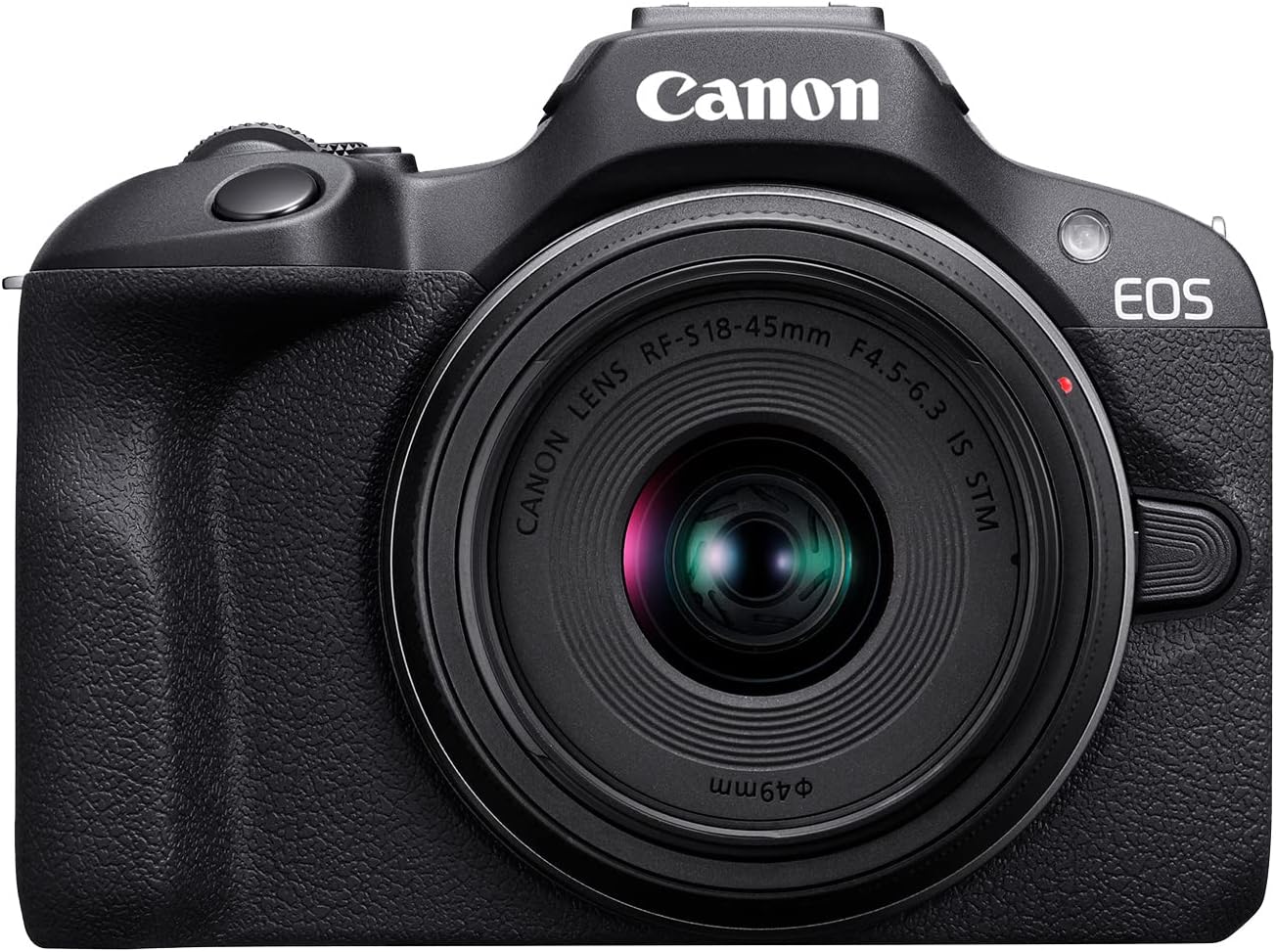


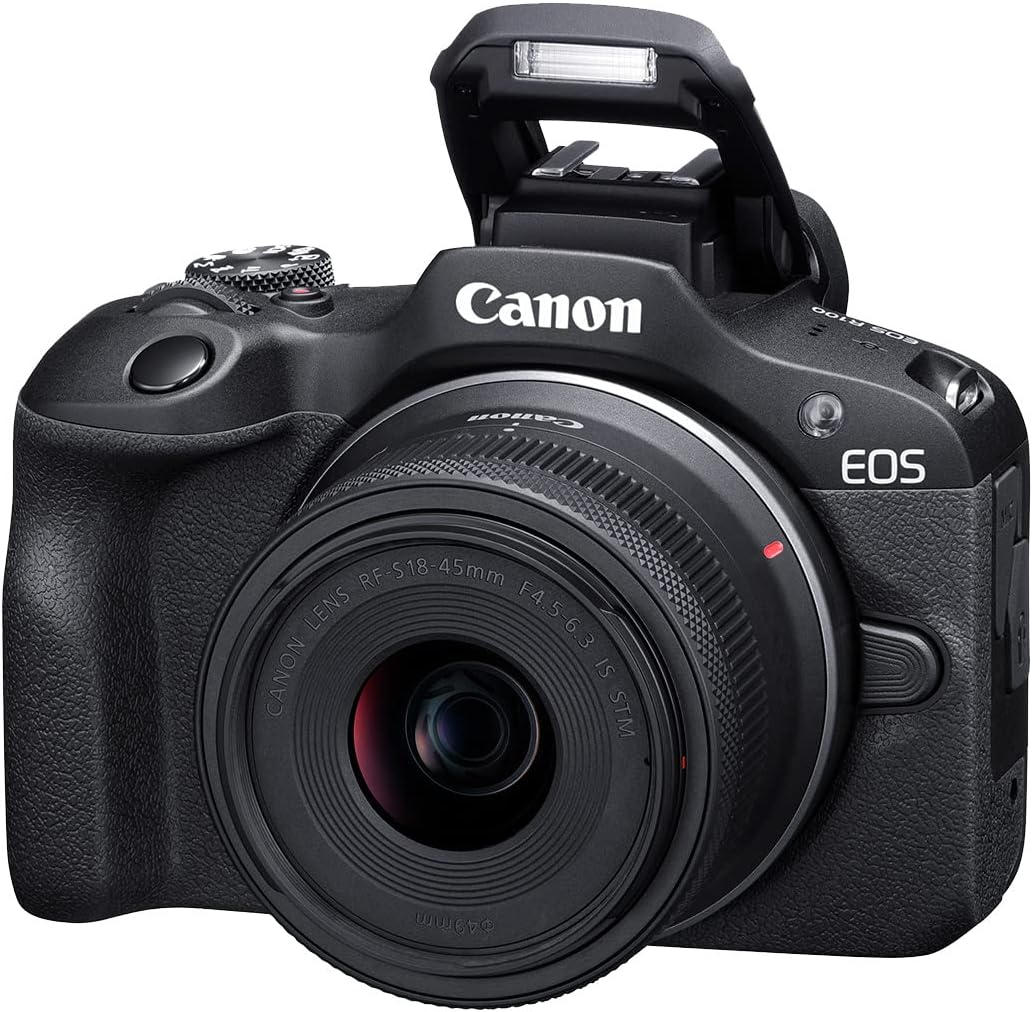
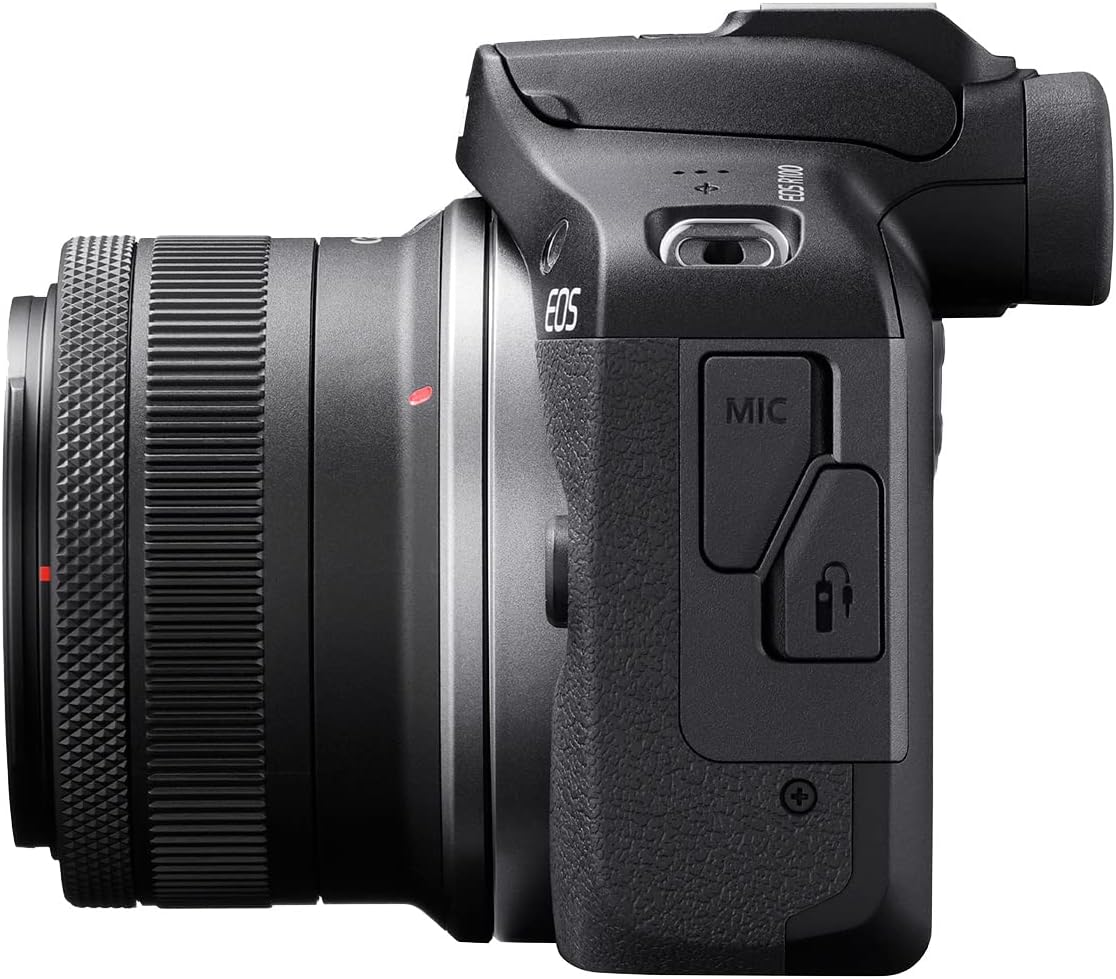
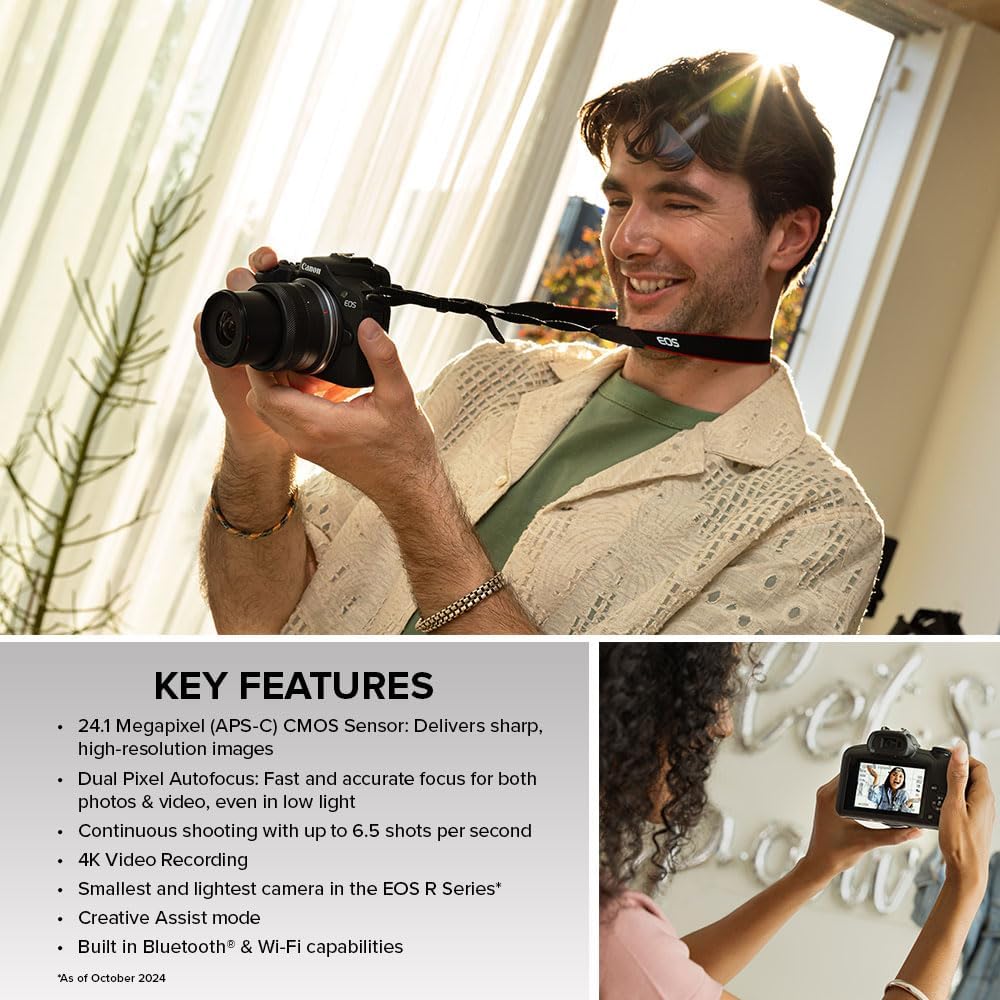
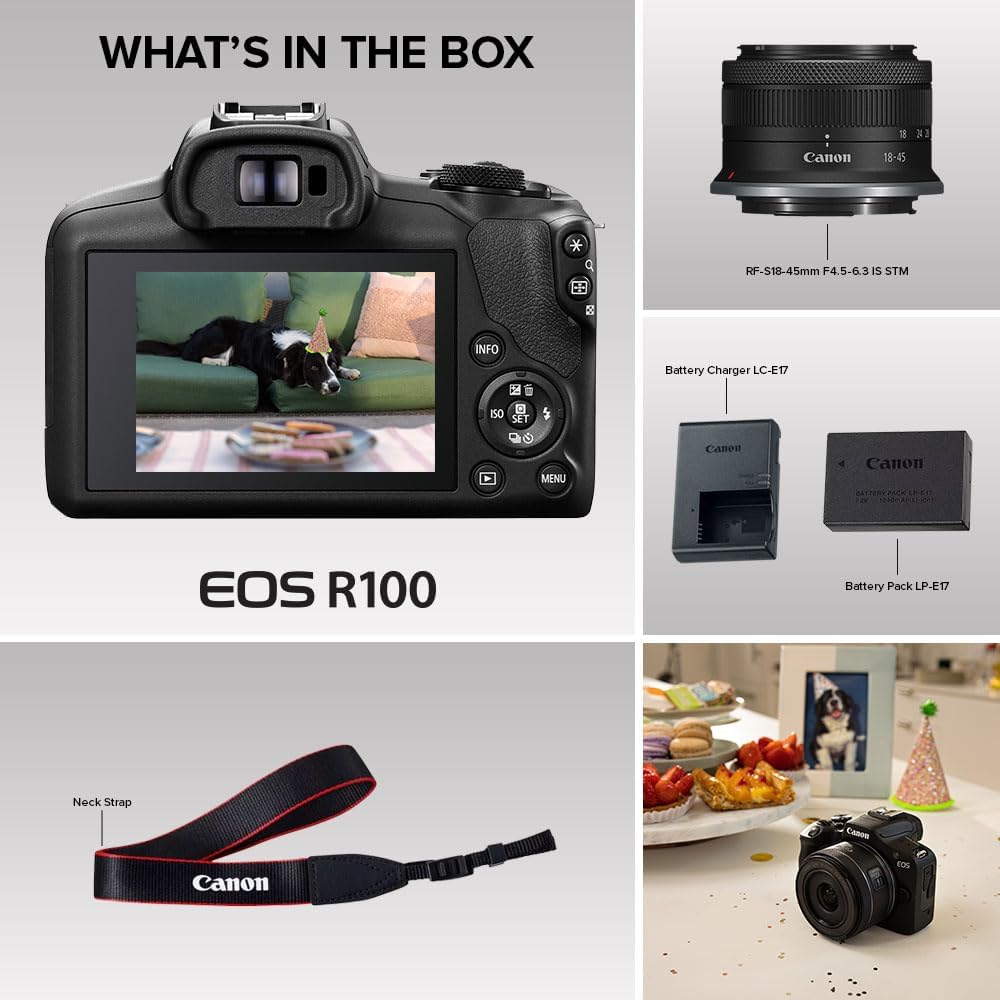
Price: $649.99 - $599.00
(as of Sep 06, 2025 02:32:44 UTC – Details)




